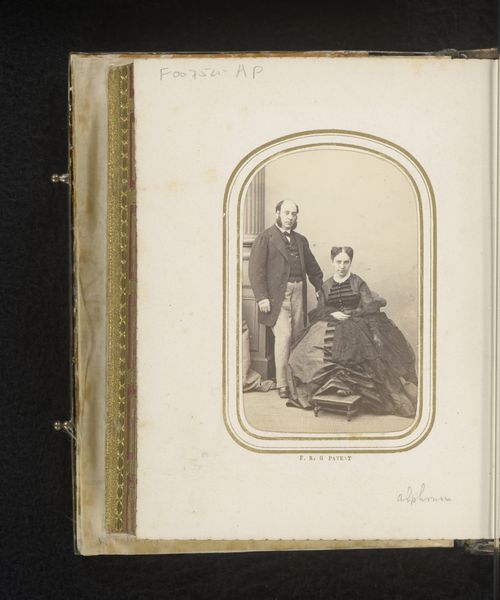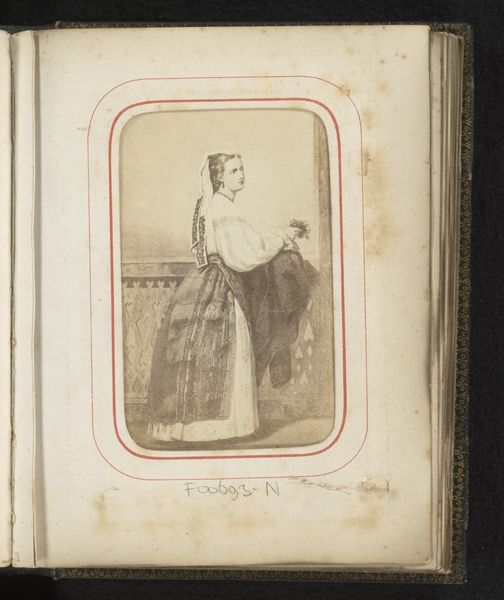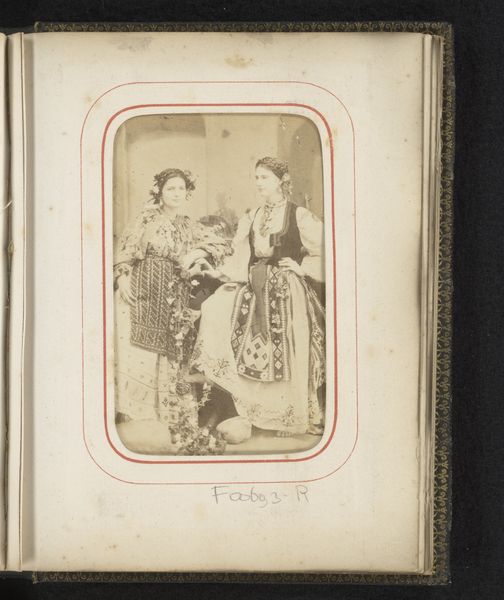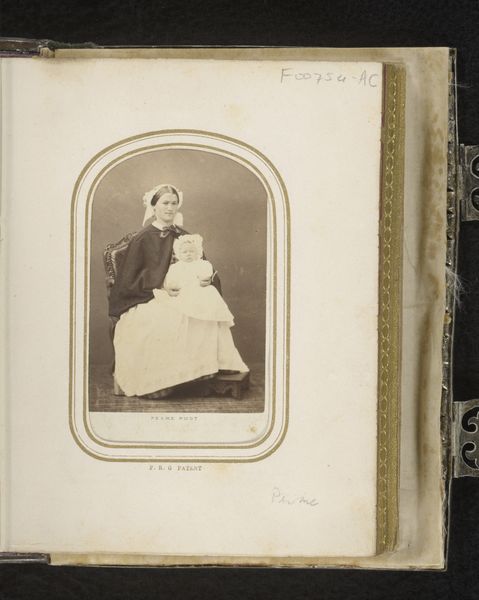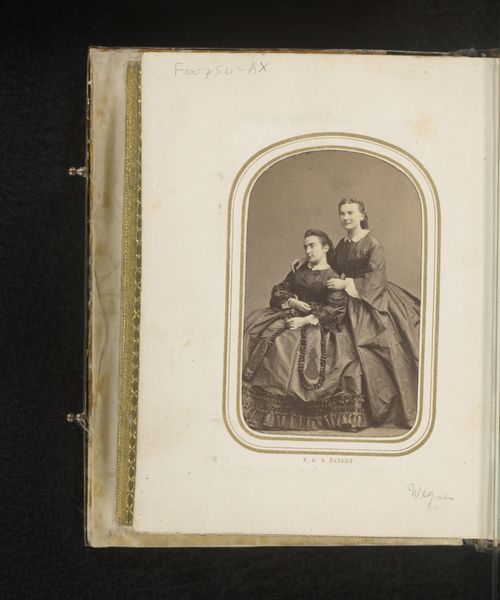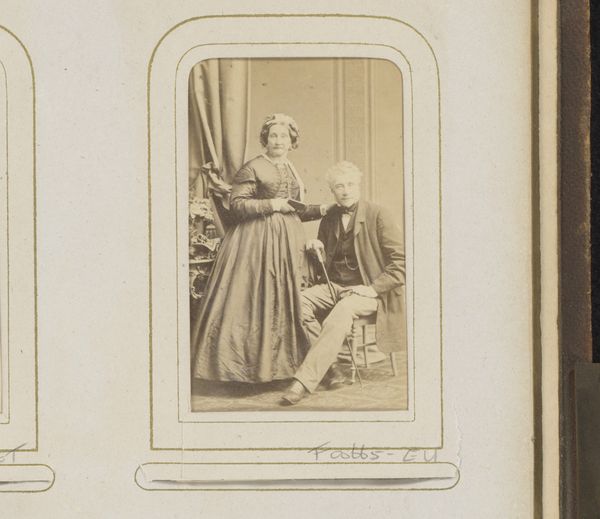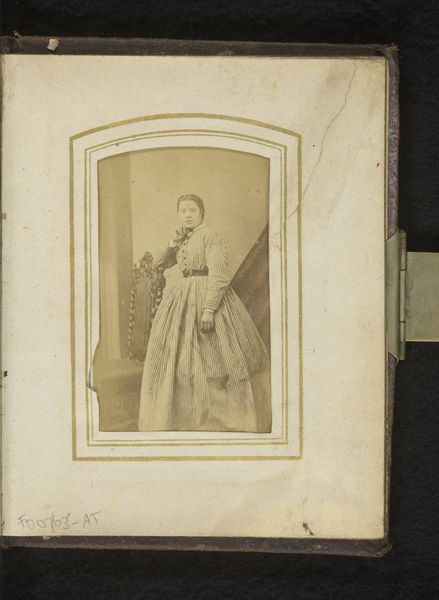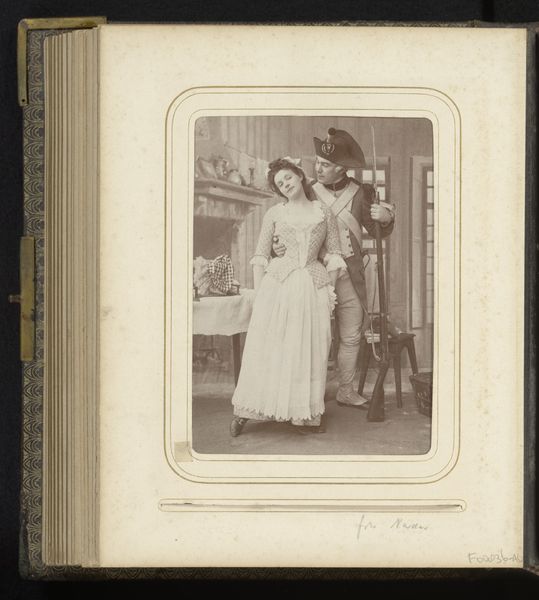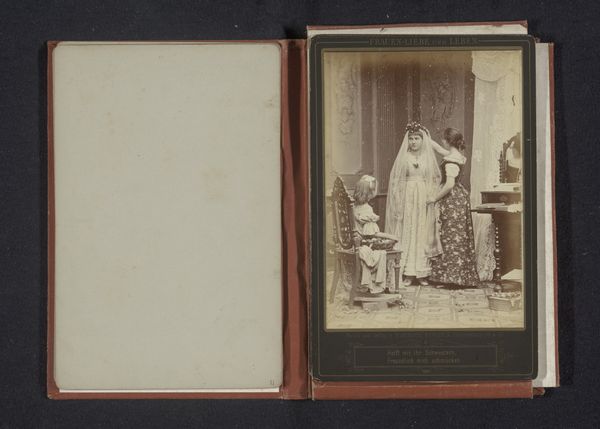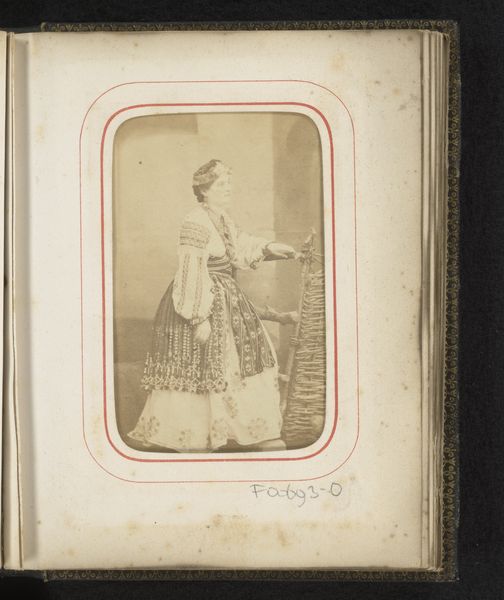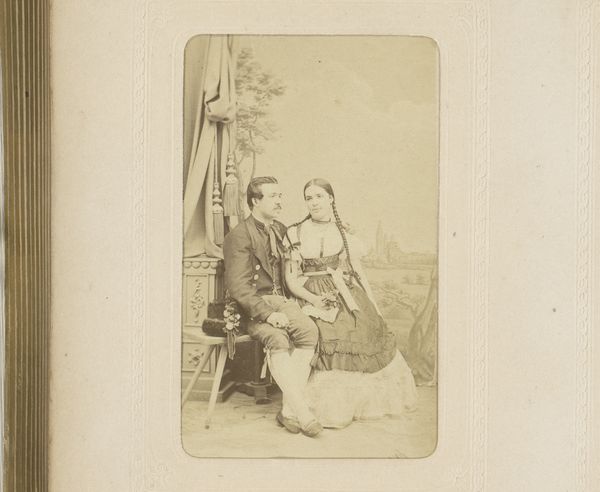
Portret van twee vrouwen in Roemeense klederdracht 1870 - 1890
0:00
0:00
Dimensions: height 85 mm, width 52 mm
Copyright: Rijks Museum: Open Domain
Editor: This is a portrait from the late 19th century, "Portret van twee vrouwen in Roemeense klederdracht," by Carol Popp de Szathmari. It looks like an albumen print mounted in an album, and what immediately strikes me is the contrast between the richness of the costumes and the somewhat faded quality of the photograph. What do you see in this piece, considering the context of its creation? Curator: For me, it’s all about the material conditions of this image's production. Albumen prints were incredibly popular then, but require a specific and labor-intensive process, coating paper with egg whites to create a glossy surface. The choice of this particular photographic process speaks volumes. It’s an interesting record of both culture and labour, because it also uses very specific local techniques for clothing manufacturing, but then the work that the photographer went through, using these laborious chemical processes, elevates it. Editor: So you’re saying that the value isn't just in the image itself, but in the way it was made? How does that affect our understanding of the women depicted? Curator: Absolutely. Consider the time invested in producing their garments and, by extension, in creating the photograph. These costumes aren't just clothing; they’re textiles signifying status and cultural identity, painstakingly hand-crafted. Then, contrast that artisanal labour with the emerging technologies of photography, which, at the time, were becoming increasingly accessible and allowed those from working and middle class background to have themselves portrayed, and even to commission portraits and other kind of visual documentation to give to family or friends. The convergence of these two forms of production – textile making and photography –creates a powerful statement. Editor: It’s almost like the photograph freezes a specific moment of production, highlighting both the historical methods of clothing and its portrayal. Curator: Precisely! And by displaying it this way in an album, bound, a whole additional layer is being built. It highlights the labor behind image-making and how these processes intersect to represent Romanian identity at this time. It’s not just about aesthetics, but also about the very tangible work and materials involved. Editor: I never thought about photography as a form of labor in that way. It adds another layer of depth to this seemingly simple portrait! Curator: Indeed, looking at the materiality challenges traditional art-historical ideas, so it can allow for fascinating revelations about culture and society.
Comments
No comments
Be the first to comment and join the conversation on the ultimate creative platform.
